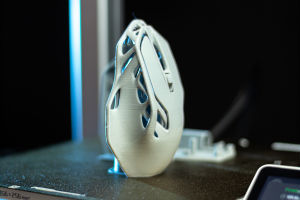Art Market
The art world is often seen as an exclusive domain where creativity and beauty come together.
However, behind every piece of artwork, there's a complex process of buying, selling, and valuing art that shapes how it is perceived in the market.
The art market, where millions of dollars change hands every year, plays a crucial role in the art world. How does this market operate, and what influences the value of art?
In this article, we'll explore how art is bought and sold, from auctions to galleries, and how artists, collectors, and investors interact within this fascinating economic ecosystem.
How Art is Bought: Galleries, Dealers, and Direct Sales
The traditional route for buying art involves galleries and dealers. Galleries showcase works by artists, and collectors purchase pieces either directly or through intermediaries. These sales often happen in person, allowing potential buyers to appreciate the artwork up close.
For contemporary artists, having a reputable gallery represent their work is key to entering the market. Galleries act as curators, selecting works that align with the tastes of collectors. They often host exhibitions and events to introduce new works to buyers.
However, it's not just traditional galleries where art is bought. Online platforms like Artsy and Saatchi Art have revolutionized how people buy and sell art. These digital spaces give collectors access to a global selection of artworks without ever stepping into a physical gallery.
The Auction House: High-Stakes Art Sales
One of the most high-profile ways art is bought and sold is through auction houses. Christie's, Sotheby's, and Phillips are among the biggest names in this arena, where some of the world's most expensive artworks are sold. Auctions can create a sense of excitement and urgency, as bidders compete for coveted pieces.
The auction process typically involves placing bids, with the highest bidder securing the artwork at a set price. The auction house takes a commission, which is usually a percentage of the final sale price. Auctions are often used to sell rare, high-value pieces, including works by famous artists like Picasso, Van Gogh, or Banksy.
These sales can result in record-breaking prices, with artworks sometimes selling for tens of millions of dollars. The price is determined not only by the quality of the artwork but also by factors like provenance (the artwork's history and ownership), rarity, and market demand.
Art Valuation: What Determines the Price?
The valuation of an artwork is a complex and often subjective process. While some factors, such as the artist's reputation and the quality of the work, are easy to assess, others are more nuanced.
One major factor is the artist's history and market performance. Established artists whose works have consistently sold well in the past are more likely to command higher prices. For emerging artists, however, their value is often speculative and based on potential. Collectors may buy works in the hope that the artist's career will rise, increasing the value of their work over time.
Rarity also plays a crucial role in art valuation. Limited edition prints, one-of-a-kind pieces, and works from a particular period in an artist's career often command higher prices because of their scarcity. The condition of the artwork is equally important—pieces that are well-preserved or recently restored are typically more valuable.
The market itself is also a determining factor. Art prices fluctuate based on trends, economic conditions, and shifts in consumer taste. For example, in times of economic boom, collectors may feel more confident in making high-value purchases, while during recessions, the art market might experience a slowdown.
Investing in Art: A Growing Trend
Over the years, art has increasingly been seen as an investment, with collectors viewing it not just as an aesthetic object but as a way to grow their wealth. Many investors buy art with the expectation that its value will rise over time.
As an alternative asset class, art has the potential to offer high returns, especially in a market where traditional investments like stocks and bonds can be volatile.
However, investing in art comes with its own risks. Unlike stocks, art does not offer liquidity, meaning it can take time to sell a piece and recoup the investment. Additionally, market fluctuations, changes in taste, and unforeseen events can all impact the value of art.
Art investment firms and advisors have emerged in recent years to help guide potential investors. They provide expertise on which artists to invest in, what to look for in an artwork, and when to sell. The rise of art as an investment has also led to the growth of art funds, where investors pool their money to purchase high-value pieces collectively.
The Role of Art Fairs and Biennales
Art fairs and biennales are another significant component of the art market. Events like Art Basel in Switzerland, Frieze in London, and the Venice Biennale provide a platform for galleries, collectors, and artists to come together. These events allow galleries to exhibit their works to a global audience, often leading to direct sales or future commissions.
For artists, participating in major art fairs or biennales is a way to gain exposure and boost their market value. Collectors attend these events to discover new talent and add to their collections. In recent years, art fairs have also become important networking hubs, where industry professionals discuss trends, prices, and the state of the market.
The Digital Shift: Online Art Marketplaces
As technology continues to shape the art world, online platforms have become increasingly important. In addition to traditional galleries and auctions, online art marketplaces have opened up new opportunities for both buyers and sellers.
Websites like Artsy, Paddle8, and 1stdibs provide a platform for collectors to view and purchase art from all over the world.
The rise of digital art has also contributed to this shift. NFTs (non-fungible tokens), a form of digital art that uses blockchain technology to ensure authenticity and ownership, have gained significant attention in recent years. The sale of NFTs has seen prices soar, with digital artworks fetching millions at auctions.
Online platforms make it easier for emerging artists to gain exposure, while also providing collectors with access to a wider range of works. However, this shift raises questions about how traditional galleries and auction houses will adapt to this new reality. As online sales grow, there's a need for greater transparency and trust in digital platforms.
Conclusion: The Art Market's Ever-Evolving Landscape
The art market is a dynamic and evolving ecosystem, shaped by factors such as artist reputation, rarity, trends, and technology. From traditional galleries and auction houses to online platforms and art fairs, the ways in which art is bought and sold have changed significantly over the years.
Whether you are an art lover, investor, or collector, understanding how the art market works is essential for navigating this exciting industry. With new technologies, emerging trends, and global events shaping the future, the art market will continue to evolve. As collectors, we must stay informed and adaptable to succeed in this ever-changing environment.
Have you ever bought a piece of art, or do you plan to invest in it? Share your thoughts on the exciting world of art commerce!
Contact to : xyjph123@gmail.com
Privacy Agreement
Copyright © boyuanhulian 2020 - 2022. All Right Reserved.
Privacy Agreement
Copyright © boyuanhulian 2020 - 2022. All Right Reserved.


